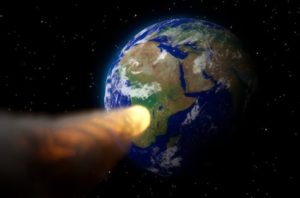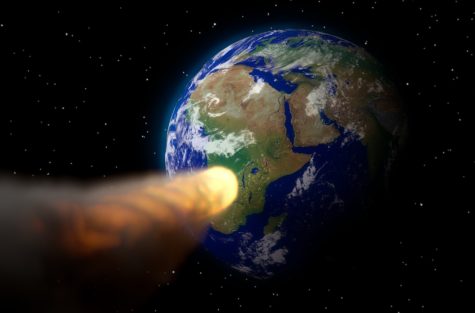SOUTHAMPTON, England — It’s been played out on the big screen before, but should an asteroid actually strike Earth, what would happen? A new study not only examines the various impacts of an asteroid strike, but also which ones would cause the greatest amount of death and destruction.
Researchers at the University of Southampton, in collaboration with the American Geophysical Union (AGU), used a computer model to determine the theoretical impacts of such a body hitting Earth.

“This is the first study that looks at all seven impact effects generated by hazardous asteroids and estimates which are, in terms of human loss, most severe,” says the study’s lead author Clemens Rumpf, a senior research assistant at the University of Southampton in the United Kingdom, in an AGU news release.
The model used projected the ramifications of 50,000 asteroids of varying sizes— ranging from 49 to 1,312 feet in diameter— hitting our planet. Seven life-threatening consequences were accounted for and weighed in the model.
Of the seven general effects, it was found that violent winds and pressure shock waves would be the most deadly, accounting for over 60 percent of total lives lost.
More specifically, shock waves were believed to cause the rupturing of organs, while wind blasts would carry the potential to hurl human bodies and damage forests.
The five other dangerous effects from the impact of an asteroid were heat, flying debris, tsunamis, seismic shaking, and cratering.
Heat was found to be the third most dangerous consequence by a large margin; seismic shaking, cratering, and airborne debris, meanwhile, were found to have made a rather inconsequential impact.
Overall, it was found that an asteroid hitting dry land would have more of a tremendous impact than one hitting the sea.
“This report is a reasonable step forward in trying to understand and come to grips with the hazards posed by asteroids and comet impactors,” says geophysicist Jay Melosh, a distinguished professor in the Department of Earth, Atmospheric and Planetary Sciences at Purdue University.
The researchers hope that their discoveries shed some light on the danger inherent in asteroid impacts. They warned that it was often smaller, yet more common, asteroids that carried the most danger.
“If only 10 people are affected, then maybe it’s better to evacuate the area,” adds Rumpf. “But if 1,000,000 people are affected, it may be worthwhile to mount a deflection mission and push the asteroid out of the way.”
Of course, an asteroid strike on Earth is quite rare. Rumpf says asteroids measuring 60 meters (more than 190 feet) wide penetrate the atmosphere approximately once every 1500 years, while one measuring 400 meters (more than 1,300 feet) across is likely to strike the planet every 100,000 years.
The study’s finding were published in the AGU-sponsored journal Geophysical Research Letters.
